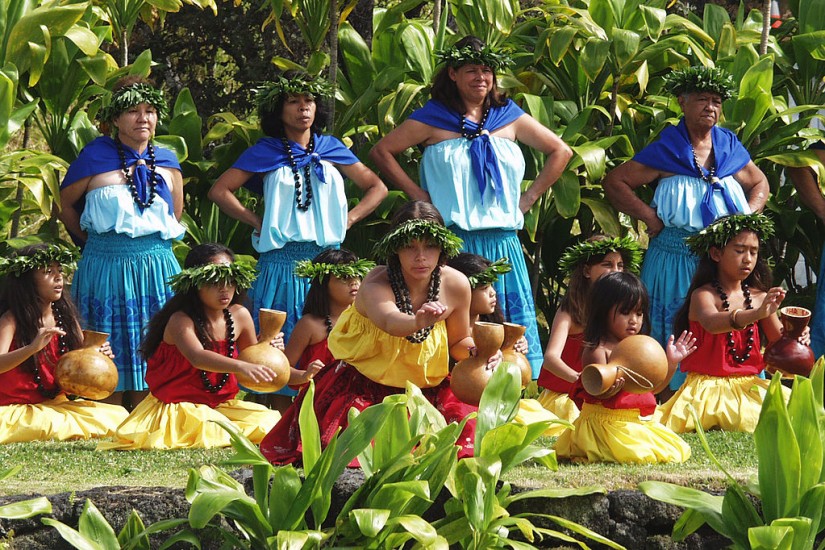Even as the hula was, again, on the verge of suppression in Hawaii, an American entrepreneur named Henry Foster saw an opportunity to cash in on every Westerner’s favorite fantasy: A gentle, alluring Polynesian woman who gives a welcoming smile as she shimmies her hips. According to Adria Imada in Aloha America, in 1892, just before the U.S.-supported overthrow of the Kingdom of Hawaii, he convinced Kini Kapahu and two other women who’d been in Hui Lei Mamo to join the first-ever touring hula ensemble.
As their country’s government crumbled, for four years, the seven-member group performed what was billed as the “naughty naughty hula dance” across North America and Europe, often for a five-cent entry fee, at dime museums and vaudeville theaters. Kini Kapahu—who later changed her name to the American-sounding Jennie and took her husband’s last name, Wilson—“toured Europe, performing in Paris at the Folies Bergère, in Germany for Kaiser Wilhelm II, and in Russia for Tsar Nicholas II,” Hale writes in The Natives Are Restless. In photos, you see that, offstage, the female dancers had adopted “modern,” often modest dress, so when they wore leis and grass skirts for the 1893 Chicago World’s Columbian Exposition, they did so to play into American stereotypes of Hawaiian identitiy.
Of course, not everyone on the American mainland had the opportunity to see a real hula girl. Promoters with no qualms about cultural appropriation hired white burlesque dancers to play “hula girls” for their circus sideshows and erotic tease acts. Around the same time, the vaudeville composers of grossly caricatured “coon songs” about African Americans wrote similarly insulting slapstick ragtime tunes stereotyping Hawaiians. Songs like “Ma Honolulu Queen” (1896), “My Gal from Honolulu” (1899), “Ginger Lou” (1899), and “The Belle of Honolulu” (1902) weren’t about Hawaiian culture but ogling exotic hula girls over ordinary mainland women.
Because more and more mainlanders traveled to Hawai‘i on new steamships at the turn of the century, the U.S. government funded the Hawai‘i Promotion Committee, which was put together by local merchants and leaders in the hospitality industry in 1903. In addition to producing travel brochures, promotional material, and souvenir postcards, this committee continued to send Jennie Wilson, as well as other all-female hula troupes, also known as “hularinas” and “hula queens,” around the country to dance and play music for Americans.
“The turn-of-the-century was the beginning of the hula-girl thing,” Hale told me. “This exotic country of brown-skinned people had just been annexed into the United States. According to some scholars, there was a very self-conscious desire to make Hawai‘i comfortable and familiar. The government wanted white Americans to see Hawaiians as welcoming lovely people that the United States wanted to bring in, not as naked ‘savages’ or Indians.”
